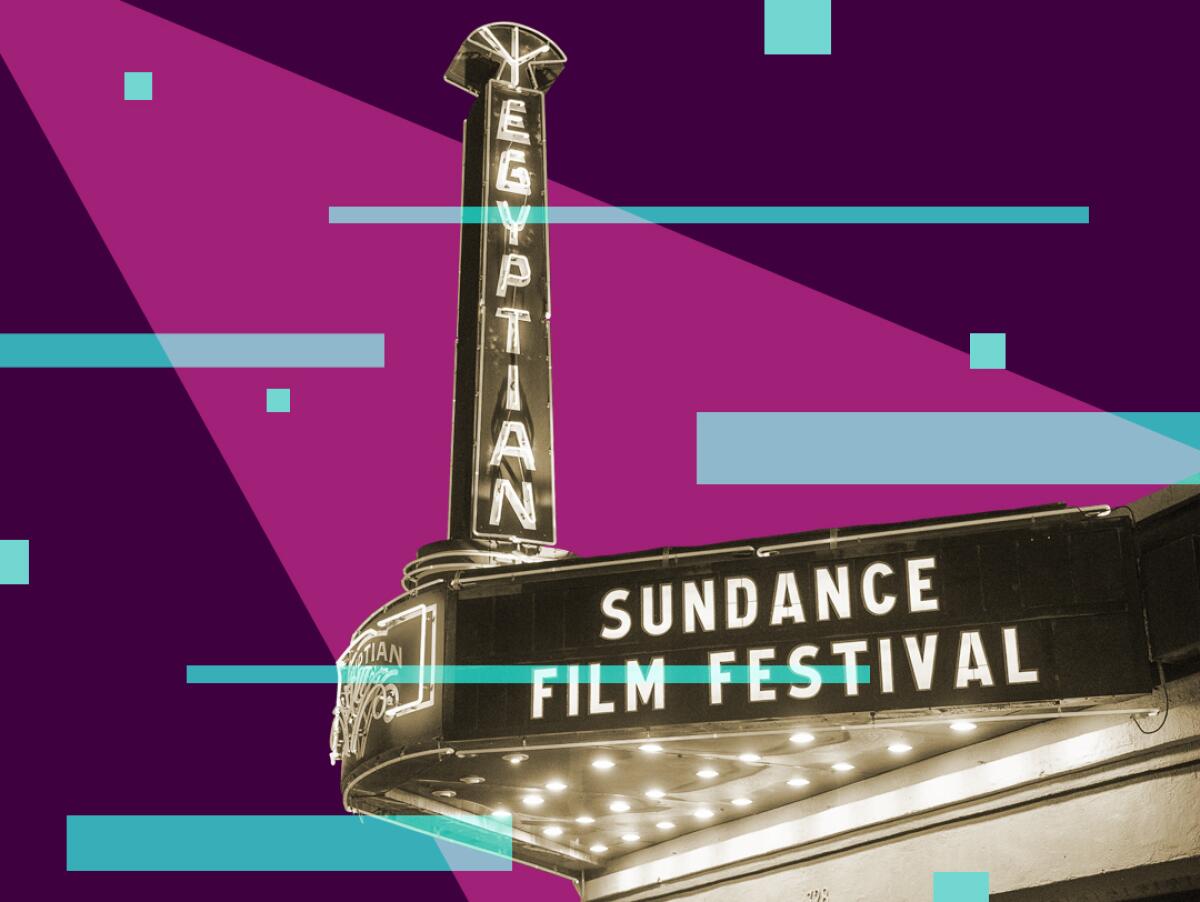Sundance Film Festival is coming up. Here’s what Hollywood is expecting

- Share via
Welcome to the Wide Shot, a newsletter about the business of entertainment.
Programming note: The Wide Shot is going to Sundance! We’ll be reporting and sending dispatches from Park City throughout the festival’s first weekend, so I guess I won’t be getting much skiing in. If this was forwarded to you and you’re interested in what’s what, sign up here.
Sundance like no one’s watching
There are two main reasons why this year’s Sundance Film Festival is expected to be a tepid market for independent movie sales.
Yes, the hand wringing over the theatrical performance of prestigious, Oscar-friendly movies has only increased in intensity since last year. Acclaimed pictures such as “Tár,” “Armageddon Time,” “The Fabelmans” and “She Said” faltered at the box office.
But also, and perhaps more importantly, distributors’ appetites are waning this year.
Studios and streamers are pulling back on their spending as they adapt to shifting priorities in the industry. Buying the distribution rights to fancy awards contenders isn’t a top focus for major entertainment companies right now, as finances tighten and streaming business proves to be more challenging than expected.
“There are just fewer buyers, and they are spending less money in 2023,” said Vinay Singh, the new CEO of indie film production company Archer Gray, known for “20th Century Women” and “Can You Ever Forgive Me?” “I think that will swing the other way. I just don’t know if that’s in 2024 or 2025, but we’re definitely in kind of a retrench moment, in terms of just the sheer number of dollars spent on content. In particular, acquiring content.”
Festival trends are often cyclical. Indie film has long weathered boom-and-bust cycles, and veterans know that festivals — especially Sundance — are places where the excitement of standing ovations and dealmaking can trump common sense.
“It’s like attending a wedding where you know the couple is going to get divorced,” said one longtime indie business player.
This year, low-budget horror films and thrillers (in the vein of 2022’s “Emily the Criminal”) will likely fetch bids, as should comedies and feel-good family stories (like “CODA” and this year’s “Theater Camp” ). But producers are expecting a tough market for adult dramas.
Even in a down year like this one, there’s always the chance of a head-spinning deal for a hot film. This year has its share of exciting titles looking for a buyer, including two high-profile literary adaptations: “Eileen,” based on Ottessa Moshfegh’s dark, critically acclaimed novel; and “Cat Person,” adapted from the viral New Yorker short story.

In a way, it’s the same as it ever was. Noncommercial movies — those that seem practically designed for awards season — often struggle to win audiences. Try selling a black comedy titled “Triangle of Sadness” to the general public. Not easy.
It’s not all bad. As the box office continues to recover from pandemic shutdowns and production backlogs, there are signs that there’s still a decent business in releasing adult-oriented movies in theaters, as long as the films are fun and the promotional campaigns lead with their entertainment value. Big studio offerings like “The Woman King” and “Elvis,” which are also awards contenders, made money. But those typically aren’t the kinds of art house movies we’re talking about at Sundance.
Streaming and shortened theatrical windows — a trend accelerated by the pandemic — are often blamed for eating into the theatrical market for artsy films. It’s likely that some audience members are staying away from theaters because they know these movies will be available at home soon after their theatrical releases.
Even among the highbrow material, there are signs of hope. “The Banshees of Inisherin” hasn’t cracked $10 million at the domestic box office, but winning three Golden Globes, including best picture (musical or comedy) should help streaming audiences find it on HBO Max. “The Whale” has built respectable momentum at cinemas.
Streaming can be the right move for certain festival picks. Marketing a film for theatrical release is expensive, even if it’s not going out on 2,000 screens. When a studio puts an independent movie in theaters without the right amount of marketing to support it, that’s not a good thing for anyone.
“Undoubtedly, for movies, the purest experience, of course, is to see it in a dark theater with a crowd, and that is increasingly harder to come by,” Singh said. “The silver lining is, these projects have a lot of different paths, and there’s no one right way to find audiences.”
Stuff we wrote
— Iger’s latest headache: What does activist investor Nelson Peltz want? The 80-year-old billionaire first began speaking with Disney executives about joining the board last summer. Things finally came to a head this month. But much of what Peltz has demanded (cost-cutting; succession planning) is already in the works in one way or another. No way to know whether this will satisfy Disney shareholders, who will vote on board nominees at the company’s annual meeting.
— With scant viewing for its TV return, what’s next for the Golden Globes? The Tuesday telecast on NBC drew a meager 6.25 million viewers as the network considers a new deal. How many people checked out after the first 30 minutes?
— ICYMI. Noah Oppenheim exits top job in executive shake-up at NBC News. CNN will go to a three-anchor format in daytime revamp. Calif. legislators demand Endeavor’s Ari Emanuel remove Dana White as UFC president. DirecTV to shed more than 200 managers.
Number of the week

That’s the number of scripted English-language shows the aired in 2022, according to FX’s annual barometer of the long-running boom in TV series. The tally is up 7% from the 559 programs the Disney-owned cable programmer counted during the prior year. Aside from a dip in the COVID-19-damaged year of 2020, the TV story has been one of uninterrupted increases in the number of series. Maybe this is the year “Peak TV” actually peaks?
Runner-up: $15.99
Warner Bros. Discovery is raising the monthly subscription free for HBO Max by $1.
2nd runner-up: 1.7 billion
Netflix’s “Harry and Meghan” amassed 1.7 billion viewing minutes in the U.S. from Dec. 12 through Dec. 18, the week that the second half debuted, according to Nielsen. Half of the viewers were 50 or over, and a staggering 73% were women.
Best of the web
— Streaming Changed TV. Is TV Changing Streaming Back? (New York Times)
— At 75, Legendary Director John Carpenter Isn’t Done Raising Hell in Hollywood. (Variety)
— Todger, Tiggy, Biro and Spike: A glossary of Harry’s Britishisms for ‘Spare’ readers, (L.A. Times)
— Is ‘Skinamarink’ the ‘Blair Witch Project’ for Generation TikTok? (Daily Beast).
— Pamela Anderson doesn’t need redemption. But we needed this killer profile. (NYT)
Finally ...
In personal news, I’m taking on a new role with the Los Angeles Times as senior editor of the Company Town team, helping Richard Verrier to lead coverage of the business of entertainment. I remain the “host” of this newsletter. Meanwhile, our team continues to expand with the addition of Sarah Parvini to cover the video game industry. Parvini was previously a reporter with the Times’ Metro group.
Inside the business of entertainment
The Wide Shot brings you news, analysis and insights on everything from streaming wars to production — and what it all means for the future.
You may occasionally receive promotional content from the Los Angeles Times.




